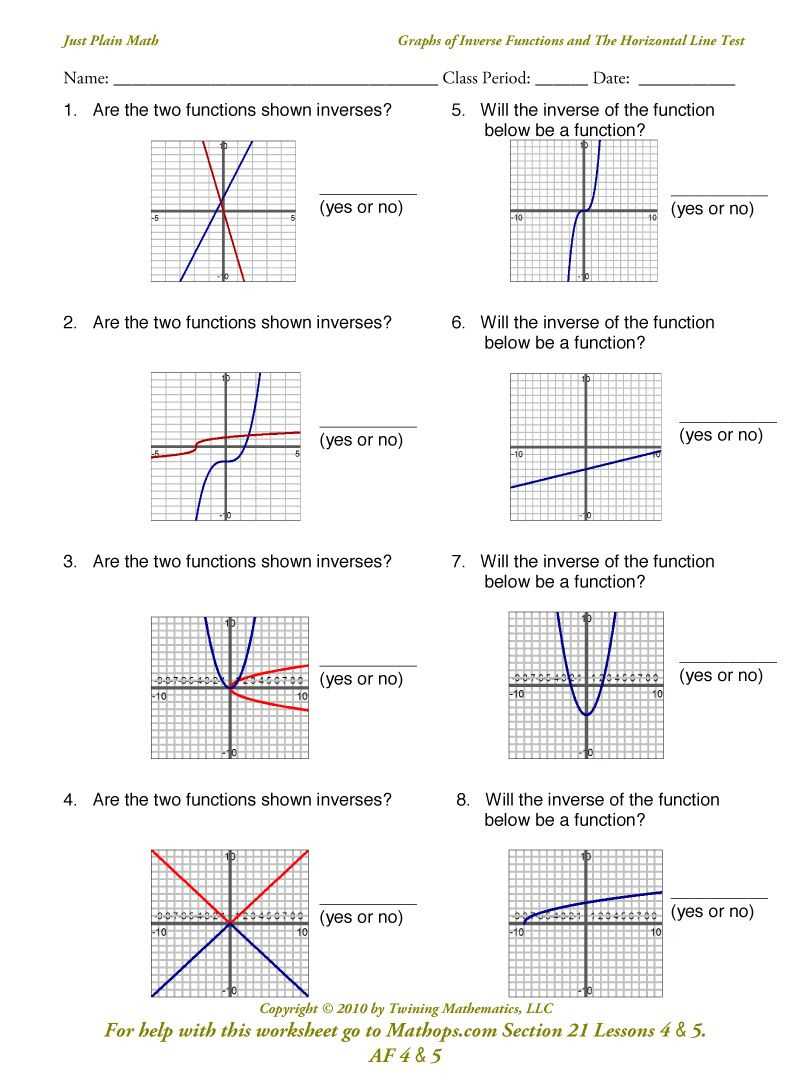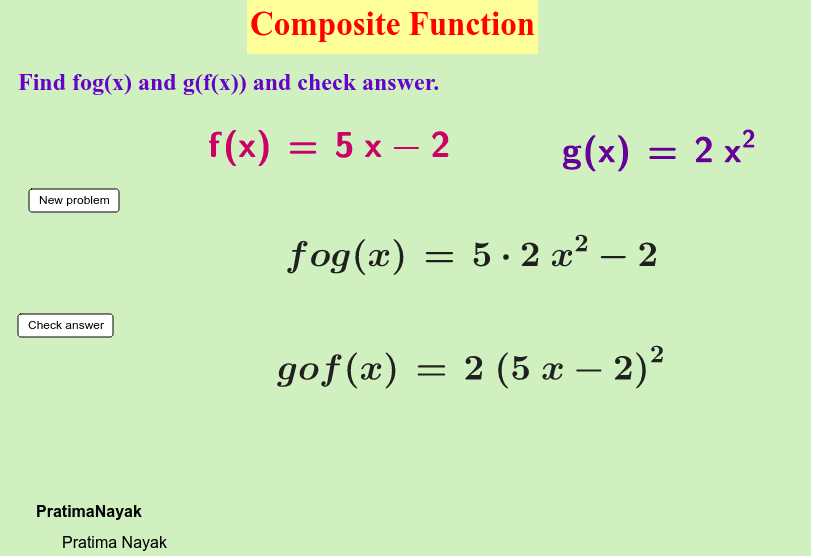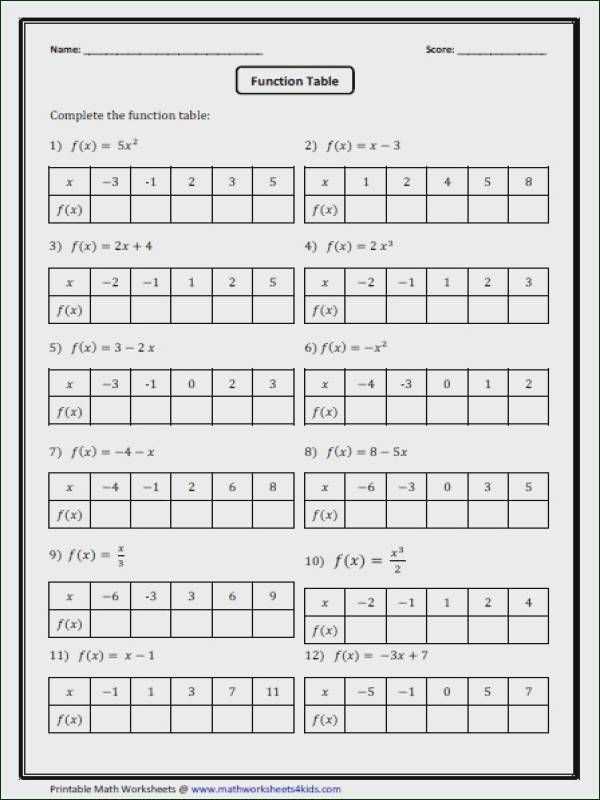
In mathematics, function operations and composition of functions are important concepts that allow us to manipulate and combine functions to create new functions. These concepts are particularly useful in calculus, where understanding how functions can be combined and operated on is crucial.
A function operation is a mathematical operation that is performed on one or more functions to create a new function. Examples of function operations include addition, subtraction, multiplication, and division. For example, if we have two functions f(x) and g(x), we can perform a function operation such as f(x) + g(x) to create a new function h(x).
Function composition, on the other hand, involves combining two or more functions to create a new function. In function composition, the output of one function is used as the input for another function. For example, if we have two functions f(x) and g(x), we can compose them by taking the output of f(x) and using it as the input for g(x) to create a new function h(x).
Understanding function operations and composition is essential for solving problems in calculus and other branches of mathematics. These concepts allow us to manipulate and transform functions to analyze their properties and relationships. By working through function operations and composition of functions worksheets, students can practice applying these concepts and develop their understanding of how functions can be combined and operated on.
Understanding Function Operations
In mathematics, function operations are a fundamental concept used to combine and manipulate functions. By performing certain operations on functions, we can create new functions with different properties and behaviors. This allows us to model and solve a wide range of mathematical problems.
One common operation is function addition. When we add two functions, we create a new function by adding the values of the original functions at each input. For example, if we have two functions f(x) = 2x and g(x) = x^2, their sum, denoted as (f + g)(x), would be (2x + x^2). This new function combines the linear and quadratic properties of the original functions.
Another operation is function subtraction. When we subtract one function from another, we create a new function by subtracting the values of the second function from the first function at each input. For example, if we have two functions f(x) = 3x and g(x) = x^2, their difference, denoted as (f – g)(x), would be (3x – x^2). This new function combines the linear and quadratic properties in a different way compared to function addition.
Function composition is another important operation. It involves combining two functions to create a new function, where the output of one function is used as the input for the other function. This operation is denoted as (f ∘ g)(x) and is read as “f composed with g of x”. For example, if we have two functions f(x) = 2x and g(x) = x + 1, their composition would be (f ∘ g)(x) = 2(x + 1), which simplifies to 2x + 2. This new function represents the result of performing the operations of both functions in succession.
Understanding function operations is crucial for solving complex mathematical problems and analyzing real-world situations. By manipulating and combining functions, we can gain insights into relationships, make predictions, and find solutions to various mathematical and scientific problems.
Definition and concept of function operations
When working with mathematical functions, it is often necessary to combine or manipulate them in various ways. This is where function operations come into play. Function operations refer to the processes of combining, modifying, or evaluating functions to obtain new functions or values.
One common type of function operation is function composition. Function composition involves taking two or more functions and forming a new function by applying one function’s output as the input to another function. The result is a new function that represents the combination of the original functions. For example, if we have functions f(x) and g(x), the composition of f and g can be written as (f ∘ g)(x) = f(g(x)), where the output of g(x) becomes the input for f(x).
Another important function operation is the addition or subtraction of functions. When adding or subtracting functions, we simply add or subtract the corresponding values of the functions at each point. For example, if we have functions f(x) = 2x and g(x) = x^2, then the sum of f(x) and g(x) would be h(x) = f(x) + g(x) = 2x + x^2.
Function operations also include multiplication, division, and exponentiation of functions. Multiplication of functions involves multiplying the corresponding values of the functions at each point. Division of functions is similar, where we divide the corresponding values of one function by the values of another. Exponentiation of functions involves raising the values of a function to a power. These operations can be useful in situations where we need to scale, transform, or compare functions.
Overall, function operations play a vital role in mathematics and allow us to manipulate functions to better understand their behavior, solve complex problems, and create new functions that meet specific requirements.
Examples of function operations
The concept of function operations is an important topic in mathematics. It involves combining functions and manipulating them in various ways to create new functions. These operations can be useful in solving problems and analyzing functions.
1. Addition of functions: One of the basic function operations is addition. When two functions are added together, the resulting function is obtained by adding the corresponding values of the two functions at each input. For example, if we have two functions f(x) = x^2 and g(x) = 2x, the sum of these functions would be (f+g)(x) = x^2 + 2x.
2. Subtraction of functions: Similar to addition, subtraction of functions involves subtracting the corresponding values of two functions at each input. For instance, if we have f(x) = 3x^2 and g(x) = x, then the difference of these functions would be (f-g)(x) = 3x^2 – x.
3. Multiplication of functions: Multiplication of functions can be achieved by multiplying the corresponding values of the two functions at each input. For example, if we have f(x) = x^2 and g(x) = 2x, then the product of these functions would be (f*g)(x) = 2x^3.
4. Composition of functions: Composition of functions is another operation where the output of one function is used as the input of another function. This is denoted by the symbol “∘”. For instance, if we have f(x) = x^2 and g(x) = 2x, then the composition of these functions would be (f∘g)(x) = (2x)^2 = 4x^2.
These are just a few examples of function operations. By combining functions in different ways, mathematicians can explore and analyze various mathematical phenomena in fields such as calculus, algebra, and statistics. Function operations provide a powerful tool for solving mathematical problems and understanding the behavior of functions.
Key properties of function operations
When working with functions, it is important to understand the key properties of function operations. These properties help us manipulate and analyze functions in a variety of ways.
1. Closure Property:
The closure property of function operations states that when performing an operation on two functions, the result is always another function. In other words, the output of a function operation is always a new function.
2. Identity Property:
The identity property of function operations states that there exists a function called the identity function, which when combined with any other function, returns the other function unchanged. In other words, the identity function acts as a neutral element for function operations.
3. Associative Property:
The associative property of function operations states that when performing multiple function operations in a row, the order in which the operations are performed does not matter. In other words, the result of function operations is the same regardless of the grouping of the operations.
4. Distributive Property:

The distributive property of function operations states that when performing an operation between a function and a sum or difference of functions, the operation can be distributed over each term in the sum or difference. In other words, the result of the operation is the same whether we perform the operation individually on each term or distribute it.
By understanding and applying these key properties of function operations, we can simplify and analyze complex functions more efficiently, making them an essential tool in the study of mathematics.
Performing Function Operations

When working with functions, it is often necessary to perform various operations on them. These operations can help us analyze and manipulate functions to solve different mathematical problems. Some common function operations include addition, subtraction, multiplication, division, and composition.
Addition: When two functions are added together, we combine their respective outputs at each input value. For example, if we have the functions f(x) = 2x + 3 and g(x) = x^2, their sum (f + g)(x) would be (2x + 3) + x^2.
Subtraction: Subtraction of functions is similar to addition, but instead of combining outputs, we subtract one function from another. For example, if we have the functions f(x) = 2x + 3 and g(x) = x^2, their difference (f – g)(x) would be (2x + 3) – x^2.
Multiplication: Multiplication of functions involves multiplying the outputs of two functions at each input value. For example, if we have the functions f(x) = 2x + 3 and g(x) = x^2, their product (f * g)(x) would be (2x + 3)(x^2).
Division: Division of functions is similar to multiplication, but instead of multiplying outputs, we divide one function by another. For example, if we have the functions f(x) = 2x + 3 and g(x) = x^2, their quotient (f / g)(x) would be (2x + 3)/(x^2).
Composition: Composition of functions involves applying one function to the output of another function. For example, if we have the functions f(x) = 2x + 3 and g(x) = x^2, their composition (f ∘ g)(x) would be f(g(x)) = 2(x^2) + 3.
In summary, performing function operations allows us to combine, subtract, multiply, divide, and compose functions to solve mathematical problems. These operations help us analyze and manipulate functions to gain a deeper understanding of their behavior and relationships.
Techniques for Performing Function Operations
Function operations involve manipulating and combining different mathematical functions to solve equations and analyze relationships between variables. There are several techniques that can be used to perform function operations effectively.
1. Addition and Subtraction
When adding or subtracting functions, you simply combine the terms with matching variables. For example, if you have two functions f(x) = 3x + 2 and g(x) = 2x – 5, you can add them by adding the coefficients of like terms. The result would be h(x) = f(x) + g(x) = (3x + 2) + (2x – 5) = 5x – 3.
2. Multiplication and Division
To multiply or divide functions, you use the distributive property. For example, if you have two functions f(x) = 4x and g(x) = 2x – 3, you can multiply them by multiplying each term of one function by each term of the other function. The result would be h(x) = f(x) * g(x) = (4x) * (2x – 3) = 8x^2 – 12x.
3. Composition
Composition of functions involves plugging one function into another function. For example, if you have two functions f(x) = 2x and g(x) = x^2 – 1, you can find the composition by substituting g(x) into f(x) as f(g(x)). The result would be h(x) = f(g(x)) = f(x^2 – 1) = 2(x^2 – 1) = 2x^2 – 2.
By understanding and practicing these techniques, you can easily perform function operations and solve complex equations involving multiple functions. It is important to pay attention to the rules and properties of mathematical operations to ensure accurate results.
Common mistakes to avoid in function operations
Function operations can be challenging, especially when you have to combine multiple functions or perform calculations with them. However, there are some common mistakes that students tend to make when working with function operations. Avoiding these mistakes can help ensure accurate results.
1. Forgetting to apply the correct operations: It is essential to understand the order of operations in function operations. Make sure to apply the correct operations, such as addition, subtraction, multiplication, and division, in the correct sequence to obtain accurate results.
2. Confusing function notation: One common mistake is misunderstanding function notation. It’s important to note that f(x) does not mean multiplying f by x. It represents applying the function f to the value x. Be careful when interpreting function notation to avoid errors.
3. Mixing up domain and range: Another mistake is confusing the domain and range of a function. The domain refers to the set of possible input values, while the range represents the set of possible output values. Mixing up these concepts can lead to incorrect function compositions or calculations.
4. Overlooking restrictions or undefined values: Some functions have restrictions or undefined values, such as division by zero or square roots of negative numbers. It is crucial to identify these restrictions and avoid calculations that involve them. Ignoring these restrictions can result in incorrect answers or undefined results.
5. Incorrectly simplifying expressions: When combining functions or performing calculations, simplifying expressions is often necessary. However, students sometimes make mistakes while simplifying expressions, leading to incorrect results. Take your time to simplify expressions correctly, double-checking each step to ensure accuracy.
By being aware of these common mistakes and practicing careful problem-solving techniques, you can improve your understanding and proficiency in function operations.
Practice problems and solutions for function operations
Function operations involve combining or manipulating multiple functions to create new functions. These operations can include addition, subtraction, multiplication, and division of functions, as well as composition, which involves applying one function to another.
When solving problems involving function operations, it is important to pay attention to the domain and range of the functions involved. Some operations may result in restrictions on the domain or range of the new function.
Here are some practice problems and their solutions to help you understand and master function operations:
- Problem 1: Consider the functions f(x) = x^2 and g(x) = 2x + 3. Find the sum f(x) + g(x).
- Solution 1: To find the sum, we simply add the two functions together. The sum is (x^2) + (2x + 3).
- Problem 2: Let f(x) = sqrt(x) and g(x) = x – 1. Find the difference f(x) – g(x).
- Solution 2: To find the difference, we subtract g(x) from f(x). The difference is sqrt(x) – (x – 1).
- Problem 3: Suppose f(x) = 3x and g(x) = x^2. Find the product f(x) * g(x).
- Solution 3: To find the product, we multiply the two functions together. The product is 3x * x^2.
- Problem 4: Given f(x) = x^2 and g(x) = x + 1, find the quotient f(x) / g(x).
- Solution 4: To find the quotient, we divide f(x) by g(x). The quotient is (x^2) / (x + 1).
- Problem 5: Let f(x) = x^2 and g(x) = sqrt(x). Find the composition f(g(x)).
- Solution 5: To find the composition, we substitute g(x) into f(x). The composition is (sqrt(x))^2.
By practicing these types of problems and understanding the solutions, you will become more proficient in performing function operations and composing functions. Remember to always consider the domain and range of the functions involved for accurate results.